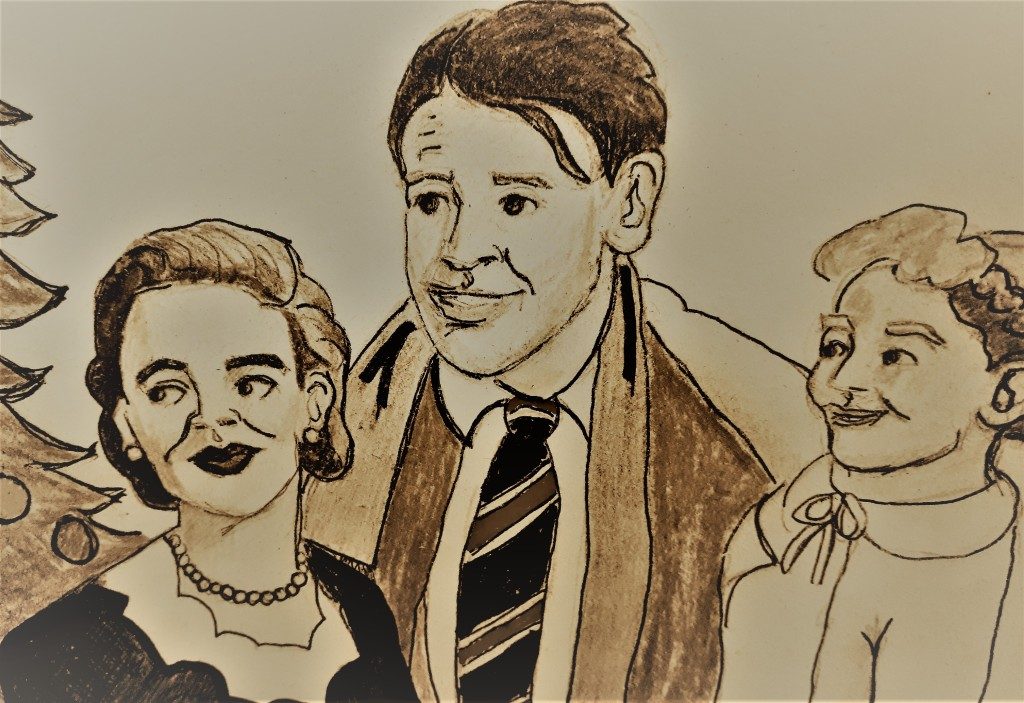
Few things in life give me quite as much comfort as watching a film. I know there are some people out there who hate to watch films more than once. For me, watching certain films over (and over) again feel like visiting an old friend. And during the holidays, the film I always make time for is It’s a Wonderful Life.
It’s a Wonderful Life is based on the short story The Greatest Gift by Philip Van Doren Stern. After several rejections, Van Doren Stern self-published the story as a 21-page pamphlet which he gave to family and friends as a Christmas Card. Somehow one of those copies ended up in Hollywood, where produces quickly bought the rights.
After initially being developed as a Cary Grant vehicle, the project was shelved for several years until director Frank Capra and new star Jimmy Stewart brought it to life again. Both fresh off serving in the Second World War, it’s not hard to see how a lighthearted project like this would have appealed to them.
Despite strong reviews and five Academy Award nominations, the film was a box-office flop when it opened in 1946. While Capra admitted in the 70s It’s a Wonderful Life was his personal favourite amongst all the films he’d made, as a financial disappointment, it also helped kill his professional career as a filmmaker.
The government must have been happy that the film was a flop. A piece of interesting history I discovered when researching this post was that the FBI considered It’s a Wonderful Life to be potential “subversive” communist propaganda. In 1947, they wrote a memo saying “With regard to the picture ‘It’s a Wonderful Life,’ [redacted] stated in substance that the film represented rather obvious attempts to discredit bankers by casting Lionel Barrymore as a “scrooge-type” so that he would be the most hated man in the picture. This, according to these sources, is a common trick used by Communists.”
The film likely would have faded into obscurity if it weren’t for the fact that in 1974 the company that owned the rights to the film, Republic Pictures, failed to renew the copyright. Now a public domain film, anyone who could get their hands on a print could screen it. Television stations jumped on this. With the film airing non-stop on several different networks during the holidays, the story of George Bailey shown what the world would be like without him was introduced to a new generation. (Republic Pictures eventually realized what a horrible mistake they’d made, suing in the early nineties to get the rights back.)
Television is where I first saw It’s a Wonderful Life. It has since remained a constant presence in my movie collection first on VHS, then DVD, and finally Blue-Ray. (Yes internet, I still have physical media. You can call me a Luddite all you want, but until streaming services have all of my favourite films and television shows available constantly I will continue to buy physical copies.)
For many years, it was a tradition in my family to stumble upstairs to our TV room after we’d opened presents on Christmas Eve (As Norwegians we do Christmas on December 24th) our bellies full of pork and our heads fuzzy after many glasses of aquavit and wine. Then we’d all cuddle together and watch the classic black and white holiday film.
As the years passed, one by one my family members started dropping like flies until it was just me making that tipsy trek upstairs at the end of the night to watch the film. I admit some years I don’t end up making it through the whole thing, but still, I always make the effort.
What can I say? Even after seeing it countless times I still feel something at George and Mary’s telephone scene. When Uncle Billy inevitably screws up. When George returns home at the end of the film and realizes just how loved he is. Just like stocking above the fireplace and a Christmas tree filled with decorations, Christmas just wouldn’t be Christmas without It’s a Wonderful Life.
Top Categories
Recent News
Daily Newsletter
Get all the top stories from Blogs to keep track.




